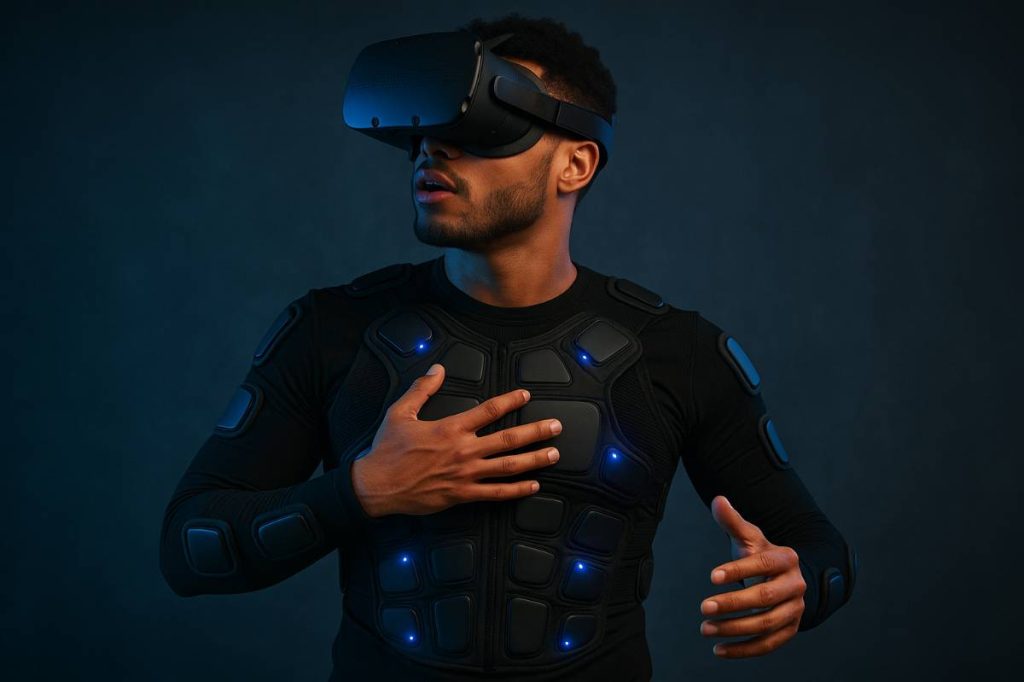VR headsets already cover sight and sound. Haptic suits go after the rest of the body. They add pressure, vibration and sometimes heat, so a hit, breeze or recoil is not just seen but physically felt.
Under the fabric sit dozens of small actuators mapped to body zones. When software triggers a signal, the suit fires the right pattern on the right spot. A gunshot near the left shoulder becomes a sharp buzz there, while a glancing hit across the chest becomes a short diagonal sweep.
Where full body feedback fits into the VR boom
VR is no longer only about games. It is used for fitness, remote work, medical training and yes, adult entertainment. The same base tech that powers a serious training sim can also drive a casual rhythm game or a discreet vr sex experience. The hardware does not care about genre, it just listens for haptic events and plays them back on the body.
For content creators this is useful. One suit can serve many types of apps: shooters, driving titles, mindfulness sessions, social hangouts. The value comes from how precisely the feedback is timed and where it lands on the torso, arms and legs. A good integration feels natural and fades into the background during play.
How haptic suits actually work
Most consumer suits mix three building blocks:
- Vibration motors placed in arrays across the torso and sometimes arms and legs.
- Optional force modules that tighten straps or apply extra pressure.
- Thermal pads that can warm up or cool down specific zones.
The VR app sends haptic events alongside position data. A punch in a boxing game might trigger a short, strong burst on one motor group, while a rain scene might use a randomized low intensity pattern over a larger area. In a military trainer, the suit can mark where a virtual projectile hit, helping the trainee read positioning mistakes without pausing the scenario.
Why games and training care about good hardware
As consumer headsets improve resolution and comfort, users notice weak haptics more. Reviews of the latest devices, such as Meta Quest models in this best VR headset roundup, show how quickly people get used to sharper visuals and higher refresh rates. Once that bar rises, flat rumble in a controller feels outdated next to full body feedback that follows exact impact locations.
Haptic suits also help with muscle memory. A goalkeeper drill in VR that pairs correct diving form with pressure cues on the ribs and hips can reinforce safe technique. Rehab clinics use controlled vibrations to guide range of motion and give patients clear signals without overloading joints. For both groups, consistency matters more than raw intensity.
The developer side of making haptics feel real
Good hardware is useless without smart software support. Many teams do not build interaction logic from scratch, they rely on frameworks that handle grabbing, UI, locomotion and input routing. Comparisons like this VR SDK overview explain how different toolkits treat physics interactions, hand tracking and device support.
When a studio picks an interaction SDK that exposes clean haptic hooks, designers can attach suit events to meaningful actions instead of sprinkling random buzzes everywhere. A door slam, a parry window, a failed medical procedure, a turbine starting up in an industrial sim, all can carry distinct signatures on the body. That is where haptic suits finally justify their cost: not by being loud, but by making every important moment in VR easier to understand and harder to forget.





